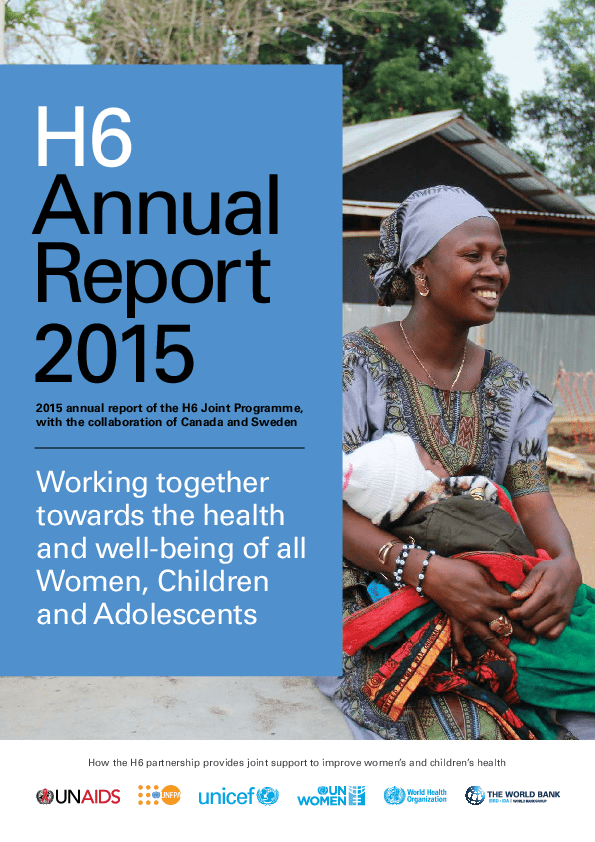
Annual Report
H6 Annual Report 2015
2015 annual report of the H6 Joint Programme, with the collaboration of Canada and Sweden
Number of pages: 112
Publication date: 01 Nov 2016
Author: UNFPA, UNICEF, UN Women, UNAIDS, WHO
Publisher: UNFPA

Annual Report
Number of pages: 112
Publication date: 01 Nov 2016
Author: UNFPA, UNICEF, UN Women, UNAIDS, WHO
Publisher: UNFPA
The H6 Joint Programme is a collaborative effort of H6 partners (UNAIDS, UNFPA, UNICEF, UN Women, WHO and The Word Bank), in collaboration with Canada and Sida, for accelerating improved maternal and child health in 10 countries with the highest maternal mortality and morbidity. The programme enables H6 partners at the country, regional and global levels to facilitate knowledge management and capacity development, strengthen national health systems, and ensure that women and children have access to quality reproductive, maternal, newborn, child and adolescent health services when and where they need them.
Since Canada’s collaboration began in 2012, H6 has worked at the global and country levels in five countries—Burkina Faso, the Democratic Republic of the Congo, Sierra Leone, Zambia and Zimbabwe. Similarly, under Sida collaboration from 2013, H6 has worked at the global and country level in six additional countries—Cameroon, Côte d’Ivoire, Ethiopia, Guinea-Bissau, Liberia and Zimbabwe. (Zimbabwe is the only recipient of financial support from both collaborations.)
The year 2015 witnessed steady progress in the H6 Joint programme. The 2015 annual report highlights achievements in each country, from improving quality of care and promoting equitable access to services, to supporting the establishment of accountability mechanisms.
With the new Sustainable Development Goals, shifting demographics and other changing circumstances, new doors have opened for national efforts to create resilient health systems. Health infrastructure will adjust to better respond to the health needs of women, children and adolescents. Meanwhile, the unfinished agenda of the H6 Joint Programme to promote quality of care, accountable systems and improving pre-service quality education for midwives must be addressed, supported and reinforced.
It is time for H6 to continue to build upon past experiences, galvanize the capacities of the partners, and revamp key players to make the Every Woman Every Child Global Strategy 2.0 a tangible reality. The most vulnerable women, children and adolescents still need to be reached during the SDG era.
See Appendix 6 of the report, Reproductive, maternal, newborn and child health knowledge products and global public goods (2011-2015), here.